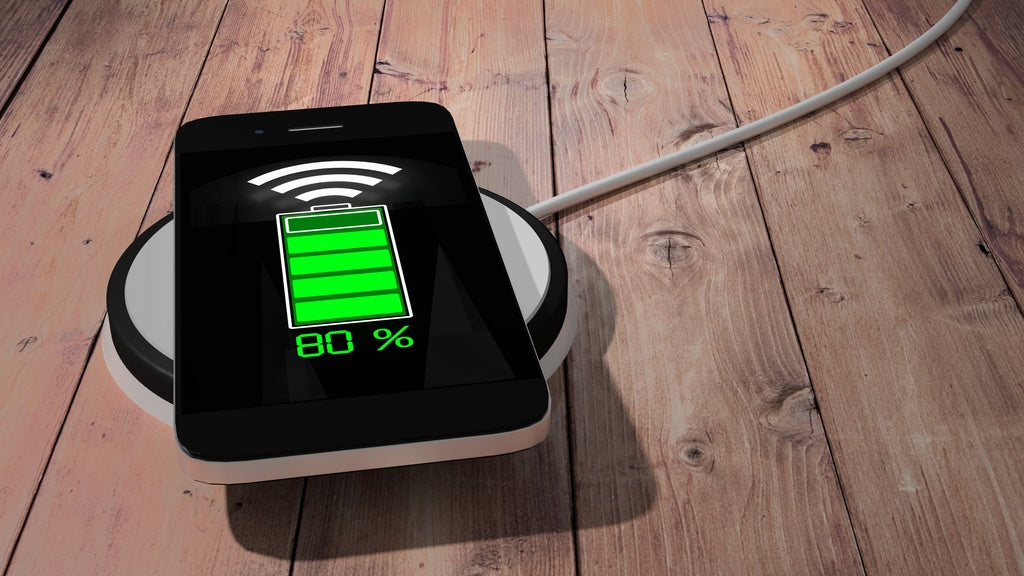
Most of us are getting used by now to the constant stream of Qi-ready devices being released on a regular basis, a trend that we hope continues for a very long time. We see wireless charging impacting a large segment of the smart device market in a way that not many believed possible just a few years back when the technology first hit the market.
It does seem that employingan invisible wireless charging pad for your wireless charging needs, for example, can drastically reduce the time and effort you would normally put into charging your devices. We say this while observing the added convenience and versatility inherent to most Qi chargers on the market today.
Part of the reason why this happens is because wireless chargers allow for a wider range of applications when using otherwise traditional devices. Not just that but it does seem that the technology lends itself tothe reinvention of tools and appliances that might actually improve their utility as a result of incorporating Qi-ready batteries.
In other words, wireless charging isn’t just shaping the smartphone landscape of tomorrow but it can actually determine its overall direction by virtue of how convenient and reliable it’s quickly becoming. Bear in mind, however, that there’s still a fair bit of work to be done before the technology becomes easily available worldwide for most of the devices that we employ on a daily basis.
An increase in security and reliability
Before we delve into the many applications for a high-end wireless charger or a charging station, we should first acknowledge how accessible such a charger can be when compared to traditional chargers. You see, it isn’t just the inherent convenience it offers that sways many people to opt for wireless chargers when available but also the reliability it delivers.
We say this because the underlying principle behind wireless charging has been known for a very long time. In fact, the technology was well-known for decades before the first wireless charger first hit the market. The principle is the famous Faraday’s law of induced voltage, and it’s how most wireless chargers operate.
Whether you’re going for an obvious and static charging station ora more invisible wireless charging pad for quick access, the standards of versatility, security, and reliability are roughly the same. Although they might not yet deliver the same voltage as wired chargers, wireless chargers certainly make up in convenience what they lack in strength.
Even if the strength is somewhat diminished, it has to be said that the operating principle is commonly used in high-power motors and transformers, which means that we’re only a few years away from having powerful wireless chargers at our disposal. This, of course, if current trends and market behaviors are to be believed.
A wide range of applications
A brief look at some of the most popular wireless chargers available on the market today tells us that this particular technology can be used for a wide variety of devices and in a diverse array of applications.
- Smartphones, portable media players, digital cameras, tablets, and wearables –Seeing how people are in constant demand for freedom of movement and shorter charging times, wireless charging is guaranteed to fix many of the issues that continue to encumber some of the most popular portable devices out there. Seeing how most of these devices use only a small amount of power to operate, a versatile multi-standard charger with guaranteed interoperability is guaranteed to open up new horizons for many portable devices.
- Computer systems, laptops, and notebooks –These are clear candidates for Qi-chargeable battery systems on account of how little power they require to run. This, of course, can vary from one device to another, but it’s pretty clear that they are all suitable candidates for incorporating wireless charging systems, either as clients or hosts.
- Accessories –We’re talking here about headsets, wireless speakers, mice, keyboards, and much more. All of these devices would stand to benefit froma cleverly positioned invisible wireless charging pad somewhere on a desktop or table, or even in an office setup. Everybody knows how difficult it can get to plug small devices into sometimes oversized chargers, and thus how easy it would become to charge up low-intensity but essential accessories long-term.
- Public access charging terminals –With the deployment of charging pads in the public domain, we could ideally allow for much better network connectivity and create billable charging stations in some way or another. We can make a case for these charging terminals to be used in coffee shops, airports, and hotel lobbies for a wider reach. These charging stations would of course have to be fairly versatile in their design and quite accommodating to a variety of devices.
- Automotive applications –It should be obvious by now that the future of wireless charging is to be entwined with cars and/or recreational vehicles. In this setup, a wireless charger could ideally be placed inside the dash or in the center console of a vehicle, thus allowing for easy access at any given time. Because Wi-fi and Bluetooth require authentification upon connection, we could even combine wireless charging with NFC technologies.
- Electric vehicles –Although this might be a bit far-fetched, we could also make a case for building smart charging stations for electric vehicles at some point in the near future. Needless to say, such chargers would have to deliver a much higher voltage over a sustained period of time, which isn’t that easy to accomplish given our current understanding of wireless charging and the science behind it.
All things considered, wireless chargers are finding their way into pretty much anything operating on battery power, so we can expect to see more and more devices becoming wireless charging-friendly over the next few years. This includes but isn’t limited to game consoles, remotes, cordless power tools, hearing aids, and even cardiac pacemakers in some cases.






